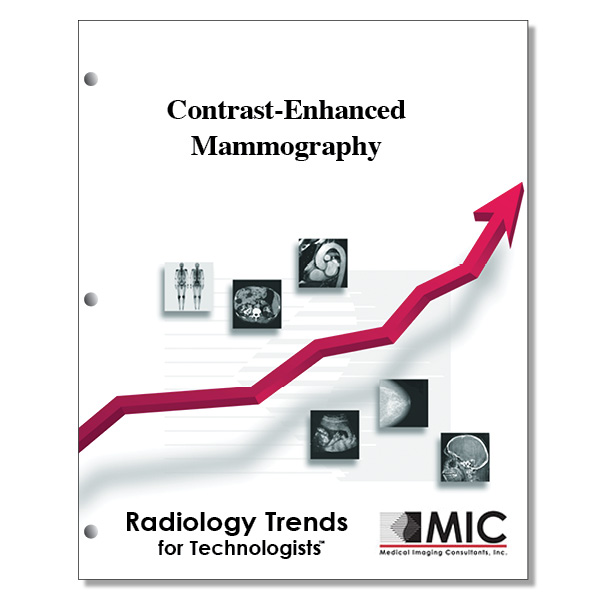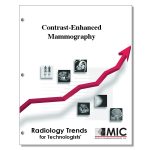

Contrast-Enhanced Mammography
Contrast enhanced mammography is an emerging technique that uses iodinated contrast material for the visualization of breast neovascularity. The technique is presented in both the screening and diagnostic setting and its potential for future applications is investigated.
Course ID: Q00664 Category: Radiology Trends for Technologists Modalities: Mammography, MRI2.0 |
Satisfaction Guarantee |
$24.00
- Targeted CE
- Outline
- Objectives
Targeted CE per ARRT’s Discipline, Category, and Subcategory classification:
[Note: Discipline-specific Targeted CE credits may be less than the total Category A credits approved for this course.]
Breast Sonography: 0.25
Patient Care: 0.25
Patient Interactions and Management: 0.25
Mammography: 0.25
Procedures: 0.25
Mammographic Positioning, Special Needs, and Imaging Procedures: 0.25
Magnetic Resonance Imaging: 0.25
Procedures: 0.25
Body: 0.25
Registered Radiologist Assistant: 0.25
Procedures: 0.25
Thoracic Section: 0.25
Radiation Therapy: 0.25
Patient Care: 0.25
Patient and Medical Record Management: 0.25
Outline
- Introduction
- Imaging Protocol and Acquisition
- Evaluation of Abnormalities Found at Screening Mammography
- Evaluation of Symptomatic Patients
- Preoperative Assessment of Extent of Local Disease Using CCEM
- CEM in Monitoring Response to Neoadjuvant Chemotherapy
- CEM as a Screening Tool
- Limitations of CEM
- The Future of CEM
- Conclusion
Objectives
Upon completion of this course, students will:
- define CEM
- list other names for CEM
- discuss how digital breast tomosynthesis compares to other imaging modalities in the diagnosis of breast cancer
- describe when the dual-energy mammogram is acquired during CEM
- state how many commercial systems are available for CEM
- list the CEM equipment vendors as presented in the article
- state the maximum amount of contrast material that can be used for CEM
- state when contrast injection starts during CEM
- state how long contrast material can remain in breast tissue after injection
- list the ways to reduce the chance of contrast material splatter or contamination during CEM
- list anode material used for low-energy exposures during CEM
- state the tube voltage used for high-energy image obtained during CEM
- list the factors affecting total breast compression time during CEM
- list the most commonly observed benign lesions to show enhancement during CEM
- describe how cysts are commonly observed on low-energy images during CEM
- recall one of the most common symptoms among women presenting for breast imaging
- list controversies surrounding breast MR imaging
- list possible outcomes due to a false-positive finding associated with breast MR imaging
- state the importance of accurately assessing the size and extent of the index tumor
- state how CEM can accurately determine the extent of the index tumor
- choose the treatment that is increasingly used before definitive breast cancer surgery to improve the likelihood of candidacy for breast conservation
- discuss how MR imaging is superior to other modalities in evaluating response to neoadjuvant chemotherapy
- state the most sensitive breast cancer screening tool
- state the sensitivity of contrast-enhanced breast MR imaging
- recall the patient types that could benefit from supplemental breast cancer screening
- relate how preliminary data on the use of CEM corelates to other imaging modalities
- state how many patients will take part in the forthcoming American College of Radiology CEM Imaging Screening Trial
- list why women prefer CEM over magnetic resonance imaging
- state the most substantial limitation of CEM
- list the factors that affect radiation dose in CEM
